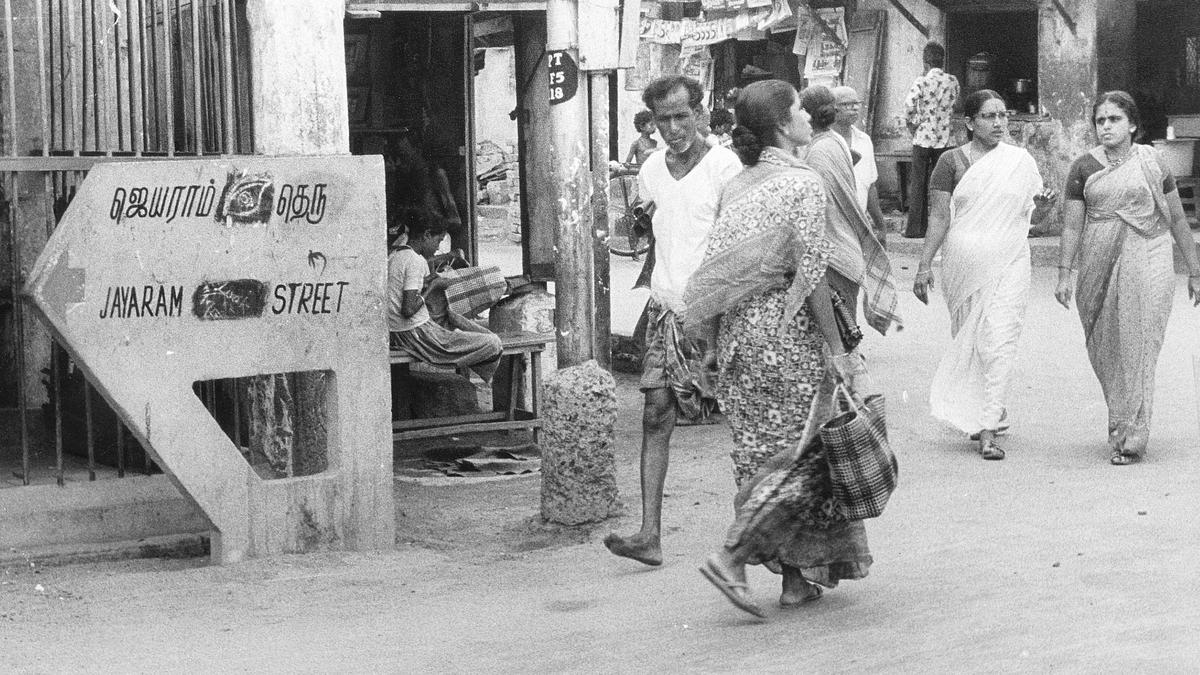
Many Madras streets had their names changed, and a street became nameless
The Hindu
Tamil Nadu's history of removing caste names from streets and schools resurfaces with recent recommendations, sparking controversy.
The recent recommendation of the one-man committee, headed by Madras High Court former judge K. Chandru, to do away with caste appellations in the names of schools has turned the limelight on similar efforts at dropping caste names in Tamil Nadu decades ago.
In 1978, the Tamil Nadu government, headed by AIADMK founder M.G. Ramachandran (MGR), had taken an initiative to drop the castes of leaders and prominent personalities from the streets named after them. In September that year, participating at the valedictory function of the centenary celebrations of Dravidar Kazhagam founder Periyar E.V. Ramasamy, MGR had announced that Coimbatore district would be bifurcated into two with Coimbatore and Erode as headquarters. Erode, he said, would be named Periyar district. At this function, he declared that the government would take steps to remove the caste names from the name boards of streets and roads at all places in the State. In 1979, the government issued an order to the effect that streets should not bear names indicating castes.
Consequent to this order, prominent streets in different parts of the State underwent a change in name, including in the capital Madras (now Chennai). Thus G.N. Chetti Street at T. Nagar became G.N. Street and V.S. Mudali Street at Saidapet was called V.S. Street. Curiously, the Brahmin Street at Saidapet was left with a name board that just read the ‘Street’.
This also led to some confusion for a few years. Eventually, in March 1982, the government even said it had decided to rename streets bearing caste names in Madras to avoid confusion. According to a report in The Hindu, the then Local Administration Minister, P. Kulandaivelu, had pointed out that many streets bore the same proper names. For instance, there were ‘Srinivasa Naicker Street’ and ‘Srinivasa Aiyar Street’ and when their castes (Naicker and Aiyar) were removed, they would bear the same names. “This would create confusion, and hence, the reason to rename some streets after leaders,” he had said. In the case of ‘Netaji Subhas Chandra Bose Road’, the Minister had said it would be restored as ‘N S Chandra Road’ in Madras.
Just like the opposition from certain Hindutva groups and BJP leaders to the recommendations of the Justice Chandru Committee to ban the wearing of caste identifiable wristbands, a controversy broke out back then. In April 1983, the issue of renaming of streets and blacking out of caste names in name boards had taken a communal turn: posters appeared in Madras informing people that road signs bearing Christian and Muslim names would be erased.
“There was an uproar in the State Legislative Assembly and a number of agitated Opposition members tabled an adjournment motion demanding a detailed discussion on the inciting of communal tension in society. Several MLAs went hammer and tongs against the Hindu Munnani leader who was allegedly behind the pasting of the posters. They argued that the government must be firm in putting down such attempts to disturb communal harmony and wanted to be heard in full,” read a report published in The Hindu.
Pacifying the members, the then Finance Minister, V. R. Nedunchezhiyan, said the Hindu leader who was responsible for pasting the posters on “operation tarring” was detained the night before the day when volunteers were supposed to go about erasing Christian and Muslim road names. He said the government was even considering a proposal to bring in legislation to provide deterrent punishment to those who incited communal violence. “That marked the end of the issue in the Assembly, but public rumblings have begun only thereafter,” said The Hindu report titled, ‘Communal harmony by wiping caste names?’











